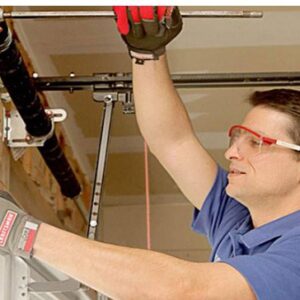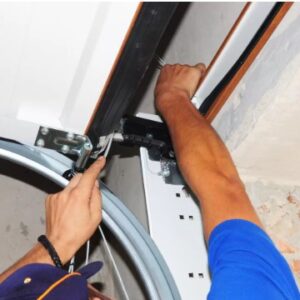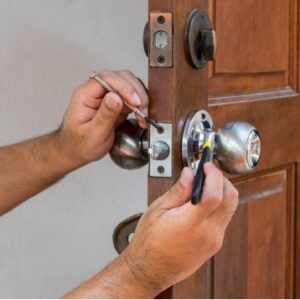Keeping a safe secure and functional depends on how well its lock mechanism and dial are maintained. Over time, wear, temperature shifts, or dust inside the mechanism can affect precision and reliability. Regular servicing and dial calibration are not just for malfunctioning safes but for prevention too. In this post, we’ll explain what actually happens inside a safe lock, what signs indicate it needs service, and how we approach calibration to make sure it works exactly as intended.
Understanding How a Safe Lock Works
A safe lock mechanism relies on a combination of gears, wheels, and a spindle that align in a very precise sequence. When the correct combination is entered, the internal wheels line up to release the bolt that keeps the safe locked. Any small deviation, such as a shift in alignment or dust build-up, can stop that alignment from occurring correctly.
Even a minor vibration, movement during relocation, or frequent use can change how the dial feels. Most mechanical locks tolerate small variations, but when calibration drifts, it can lead to incorrect readings or even a lockout. Understanding this helps prevent frustration later when a safe suddenly refuses to open despite using the right combination.
Why Servicing Matters for Safe Locks
Every safe, whether mechanical or electronic, experiences gradual wear. Dust, moisture, and friction slowly affect the moving parts. Regular servicing ensures the lock continues to operate with smooth precision and prevents small issues from developing into costly repairs.
Servicing includes cleaning the interior mechanism, lubricating contact points, tightening any loose internal components, and checking the accuracy of the dial. For businesses or offices that depend on safes daily, routine maintenance becomes a form of risk control. It keeps the contents secure while avoiding unexpected access issues that can disrupt operations.
If your safe is part of a larger security system, such as in a financial institution or law office, proper servicing also ensures that each part works consistently with the rest of the system. As a trusted locksmith in Ottawa, we focus on maintaining that balance between security and reliability during every inspection.
Signs Your Safe Lock Needs Professional Servicing
A well-maintained safe gives subtle warnings before major failure occurs. Recognizing them early makes a big difference in both cost and safety.
One common sign is an inconsistent dial response. If the dial feels tighter than usual or loose without resistance, it may indicate debris buildup or worn internal parts. You might also notice that the combination feels slightly “off,” meaning the correct number no longer lines up exactly as before.
Another signal is difficulty turning the handle or feeling resistance even after entering the correct code. This often points to internal misalignment, which can worsen if ignored. Any grinding or clicking sound inside the lock during operation is another clue that servicing is overdue.
Environmental conditions also affect performance. High humidity can cause metal parts to expand slightly, and low humidity can dry out lubricants. If your safe is located near heating or cooling vents, or in a space that experiences temperature swings, servicing should be done more frequently to preserve calibration.
The Process of Dial Calibration
Calibrating a safe lock dial is a detailed procedure that requires accuracy and patience. The goal is to make sure the dial’s numbers align perfectly with the internal mechanism’s wheel pack. Even a small offset can cause a mismatch between what the dial displays and how the lock actually reads the combination.
Calibration starts by carefully removing the dial and assessing the alignment of the spindle and drive cam. The lock is tested through several cycles using the existing combination to measure its tolerance. Adjustments are then made by repositioning the dial ring or resetting the wheel pack alignment.
Every adjustment is verified multiple times before the safe is closed again. This ensures that the dial works smoothly and that the safe opens at the exact point on every turn. Calibration is not a trial-and-error process; it requires a clear understanding of the mechanical design, which varies between manufacturers.
Common Causes of Misalignment
Safe dials become misaligned for several reasons, many of which develop gradually. Overuse is one of the most common causes, especially when users apply uneven pressure while turning the dial. Dust inside the spindle area can also shift the alignment slightly each time the lock moves.
Transporting a safe can cause even more significant shifts. When a safe is moved without locking the bolt or securing the dial, vibrations during transport may loosen internal components. That is why we always recommend checking calibration after relocation.
Temperature changes also play a role. The expansion and contraction of metal parts can create small gaps or changes in tension that throw off alignment. Servicing restores the correct balance and re-lubricates moving parts to minimize friction caused by such shifts.
When to Schedule Servicing and Calibration
For most safes in offices or commercial settings, professional servicing once every one to two years is ideal. However, safes that store sensitive documents, cash, or valuables used daily may need servicing every six months.
You should never wait until a lockout occurs to schedule maintenance. Once the dial begins to feel irregular or the safe becomes harder to open, internal wear has likely already started. Preventive care is always less expensive and less stressful than forced entry or lock replacement.
If you have recently purchased a used safe, it’s also wise to schedule servicing before use. Even if the safe appears functional, you cannot know its full maintenance history. Servicing verifies its condition and ensures that the combination and locking mechanism perform accurately.
The Importance of Professional Expertise
Safe locks may appear simple on the surface, but their internal mechanics are highly complex. Attempting to calibrate or service one without experience can easily cause permanent misalignment or damage to critical components.
Professional locksmiths use specialized tools that prevent scratches or over-tightening, along with calibration equipment that measures dial accuracy to within fractions of a degree. These precise adjustments are necessary to maintain both function and security.
Our experience working with mechanical and electronic safes across different industries helps us identify small issues that general inspection might miss. When accuracy matters, such as in commercial or legal environments, even a minor miscalibration can become a liability. We handle calibration with care to ensure dependable operation every time.
Preventive Maintenance Tips for Safe Owners
While professional servicing is essential, there are practical steps you can take to extend your safe’s lifespan between visits.
Keep the area around the safe clean and free of dust. Small particles can enter through the dial gap and affect internal components. Wipe the dial and handle gently with a soft cloth to remove oils from frequent contact. Avoid using chemical cleaners that could corrode metal parts.
Operate the dial with consistent speed and pressure. Spinning it too quickly or forcing it can create unnecessary wear. If you share access with others, ensure everyone uses the same steady approach when entering the combination.
Check for moisture buildup inside the safe or near its door seal. A small dehumidifier or desiccant pack helps prevent rust and keeps the mechanism smooth. Always close and lock the safe fully to keep the internal system aligned correctly.
Why Consistency Protects Security
Lock mechanisms are like precision instruments. Once properly calibrated, they must be operated consistently to maintain accuracy. Small variations in how the dial is turned can gradually alter performance.
Consistency also protects against forced entry attempts. A well-maintained and accurately calibrated safe is more resistant to tampering. It leaves no gaps or loosened areas that intruders can exploit.
Regular servicing not only keeps the safe operating well but also documents its maintenance history. This record can be important for insurance purposes, particularly for commercial safes holding cash or valuable assets.
How Professional Servicing Differs from DIY Attempts
Many people attempt to fix or clean their safes after watching tutorials, but safe locks do not forgive mistakes easily. One incorrect adjustment can make a combination unusable.
Professional servicing goes beyond cleaning and lubrication. It involves diagnostic testing, precision alignment, and sometimes the replacement of small internal parts that the user cannot access without specialized tools. Technicians also test each component under different conditions to ensure that temperature or pressure changes will not affect performance.
Another key difference is calibration under tension. During professional servicing, the lock is tested while the bolt is engaged and disengaged repeatedly to simulate real-world use. This helps verify that the dial’s readings remain accurate over time.
When a Safe Becomes Too Worn for Servicing
There are cases when a lock mechanism becomes too worn for proper servicing. In older safes, metal fatigue or internal corrosion can make calibration unreliable. If the spindle or wheel pack is excessively worn, parts may slip out of position again soon after adjustment.
In those cases, rebuilding or replacing the lock may be more practical. Replacement allows for resetting to factory specifications and sometimes upgrading to modern components that provide higher precision.
Even when replacement becomes necessary, we transfer the combination system securely and verify that access codes remain protected. Our focus is always on keeping the process safe and efficient without disrupting access to the safe’s contents.
Getting Professional Help
If your safe shows signs of wear, delayed response, or inconsistent dial alignment, it’s best not to wait until it locks you out. Servicing and calibration ensure smooth performance and reliable access when it matters most.
To schedule maintenance or request an inspection, you can contact us directly. Whether the issue is minor misalignment or full dial recalibration, we assess the mechanism thoroughly before making any adjustments to protect the integrity of your safe.
FAQ
How often should a safe be serviced?
Once every one to two years for general use, and more often if it is opened daily or used in a commercial environment.
Can I lubricate my safe lock myself?
You can lightly clean the dial surface, but internal lubrication should be handled by a professional to avoid using the wrong type of lubricant or overapplying it.
What happens if my combination feels off by one number?
That usually indicates minor misalignment. Avoid forcing it and schedule calibration to prevent a complete lockout.
Is electronic safe maintenance different from mechanical safes?
Yes. Electronic locks involve circuit checks and battery maintenance, while mechanical locks focus on dial and wheel alignment.
Does moving a safe require recalibration?
Yes. Movement can cause internal components to shift slightly, so recalibration ensures that the combination remains precise after relocation.




